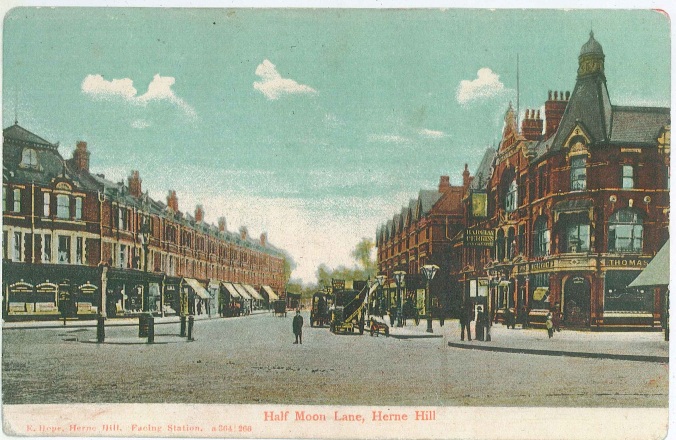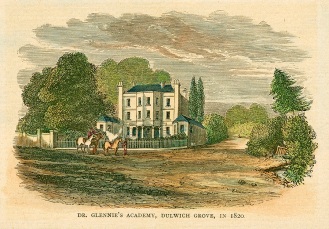By Emma Sweeney, Learning and Engagement Officer for Southwark Libraries and Heritage
In part one we heard about the ‘uproar’ and ‘hubbub’ that greeted proposals to open publicly funded libraries in the parishes of Southwark. Read on to find out what happened next.
The first parish within what is now Southwark to pass the Public Library Acts was Bermondsey in October 1887. Many local authorities did the same that year to celebrate Queen Victoria’s Golden Jubilee. Rotherhithe adopted the Acts soon after but Christchurch were the first to establish a rate-supported library, which opened in rented premises (on Charles Street, Blackfriars Road) in October 1889.

John Passmore Edwards
Camberwell eventually adopted the provisions of the Public Library Acts in 1889 after Mr. George Livesey made a handsome offer to build a library should they do so. Newington adopted the Acts in 1890, followed by St Saviour’s in 1891, leaving St George the Martyr the only parish in the area that had not done so. The money thus raised by the rates, however, was nowhere near enough to build, furnish and stock new libraries so public donations of both money and books were essential.
One of the most generous philanthropists was John Passmore Edwards, a journalist and newspaper owner from Blackwater, near Redruth in Cornwall. In his short autobiography A Few Footprints, he writes:
As I had accumulated mainly by the labour of others, I thought, and think, it was only reasonable and just that others should share in the garnered result: and to act accordingly was a duty and a privilege – a duty as a citizen and a privilege as a man.
Between 1890 and his death in 1911, aged 88, Mr. Passmore Edwards was instrumental in the establishment of hospitals, orphanages, convalescent homes, schools, museums, art galleries and twenty-five public libraries: eight in Cornwall, one in Devon (Newton Abbot, his mother’s birthplace) and sixteen in London. In A Few Footprints, he states:
Public libraries are, in my opinion, entitled to public support because they are educative, recreative, and useful; because they bring the products of research and imagination, and the stored wisdom of ages and nations, within the easy reach of the poorest citizens […] All may not use them, but all may do so if they like; and as they are means of instructing and improving some, all are directly or indirectly benefited by them.
In July 1895, the Daily Chronicle published a letter that drew attention to St George the Martyr’s need for a public library but inability to pay for it, due to the poverty of the inhabitants, and asked for help. Mr. Passmore Edwards wrote a letter that was also published in the paper, offering to pay for the building if the parishioners would adopt the Acts to maintain it. A poll was taken and the Acts adopted by a majority of 1,814 in 1896. The foundation stone of what would become Borough Road Library was laid by Mr. Passmore Edwards on Thursday 2nd December 1897.
Camberwell particularly benefited from his munificence as he had lived there for some time. Dulwich (1897), Nunhead (1896) and Wells Way (1901, now in Burgess Park) were all Passmore Edwards libraries. The foundation stone for Nunhead Library was laid on Saturday April 11th 1896. At the ceremony, Camberwell Vestry extended its thanks to Mr. Passmore Edwards, saying “We are honoured and encouraged by the special favour you have extended to Camberwell, and we are glad to know that, as a young man, you resided in its historic grove.” Mr. Passmore Edwards, in reply, noted that it was “not his fault that he had to leave Camberwell Grove about a quarter of a century before, as the house in which he happened to live at the time had to be removed in obedience to the inexorable demands of a railway company armed with parliamentary power.”
When Dulwich Library was opened on Wednesday, 24th November 1897 by the Lord Chancellor – Mr. Passmore Edwards having contributed £5000 of the total cost of £5800 – the Times opined “Probably no portion of the metropolis is better served by public libraries than the parish of Camberwell”, remarkable progress in under a decade. The foundation stone of Nunhead bore the motto, “Good deeds live on when doers are no more” and this is certainly true in the case of John Passmore Edwards.
When the various parishes were amalgamated into the Metropolitan Boroughs in 1900, Bermondsey boasted two permanent libraries, with a third to follow within two years; Camberwell four, with a fifth within two years and Southwark four.
In some ways, these libraries were quite similar to the service we provide today. Belying, even then, the cry that libraries are “just books”, a thriving programme of lectures and exhibitions was soon in full swing. There were books for lending, books for reference and a range of newspapers and periodicals. In other ways, they were quite different. The Southwark library by-laws of 1902 contain clauses that make interesting reading.
7.—A person who is resident in a house where a case of infectious disease exists, or has occurred, shall not within one month from the removal of the patient to hospital and the disinfection of the premises, or if the case be treated at home, within one month from the patient’s complete convalescence, use the Libraries in any way.
19.—Every person above the age of ten years resident, rated, employed , or attending any Educational Institution in the Metropolitan Borough of Southwark shall be permitted to borrow books for home reading […] the person desirous of becoming a borrower [must have] obtained a ratepayer to become a guarantor for him […] in lieu of such guarantee the applicant may deposit with the Librarian the sum of ten shillings…
Ten shillings would have been a huge amount of money to the poorer inhabitants of Southwark – in 1898 an ordinary labourer in England earned on average 16s. 9d. a year, rising to 17s. 5d. a year in 1902 – so, while the library was, in theory, open to all “ratepayers and inhabitants”, in practice, it is doubtful that poorer inhabitants would have been able to make use of the lending library.
Until after the First World War, most libraries operated a “closed-access” system, rather than today’s “open-access”. The bookshelves were not available for browsing. Instead you had to consult the catalogue and note the number assigned to your desired book before examining the indicator board at the counter. The indicator board in the Livesey Library, for example, was crowded with red and blue lights, one of each assigned to each book the library held. If the blue light was on, the book was available and an assistant would fetch it for you. If the red light was on, it was out on loan. At busy times, making your way through the crowd apparently required tact, strength or both!
Too many of the books thus borrowed, some thought, were fiction, which was a waste of time and money and lacked any educational value. This was a recurring criticism of public libraries. Mr. Passmore Edwards spoke in their defense at the opening of Borough Road Library and was quoted in the local press:
It was not true that public libraries were only used by fiction readers. As an instance, he said that from the Camberwell Central Library nearby, there were issued the year before more than 500,000 volumes and nearly 200,000 of them were books of general reading, including historic, scientific, artistic, biographical, religious, educational, and other works.
If any one of these 500,000 books were back late, they would have attracted fines – in Southwark in 1902, these were set at a penny for the first week and tuppence per week beyond that. Other contraventions, however, attracted far severer punishments. Stealing a book or three, as attempted in 1897 from the Livesey Library, resulted in a sentence of three years penal servitude for the thief while cutting a column from a daily paper, as a customer of Camberwell Central Library discovered in 1902, resulted in a fine of ten shillings or, if not paid, seven days in prison.
In many ways, we’ve come a long way. Some things, however, appear to be eternal. In reminiscences, Mr. William Hahn, Chief Librarian of Camberwell Libraries from 1938 to 1955, recounts how the red-headed Mr. Edward Foskett, the first Chief Librarian, would encounter “rude little boys rushing into the Central Library with a shout”, who would “call out ‘Yah! Ginger Foskett!’ if they caught sight of him, and rush out again”.
To find out more on this subject, drop in to Southwark Local History Library and Archive.











